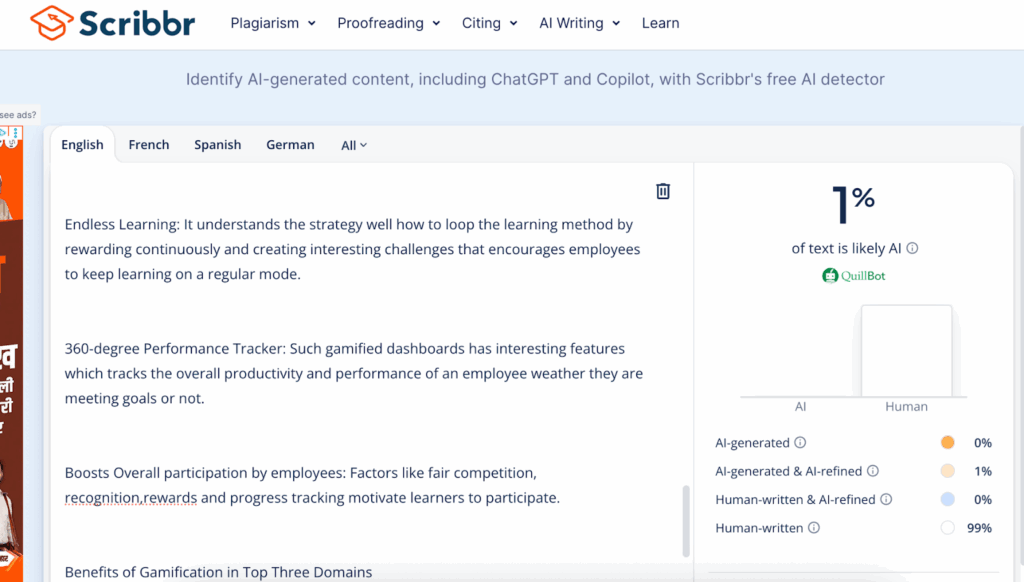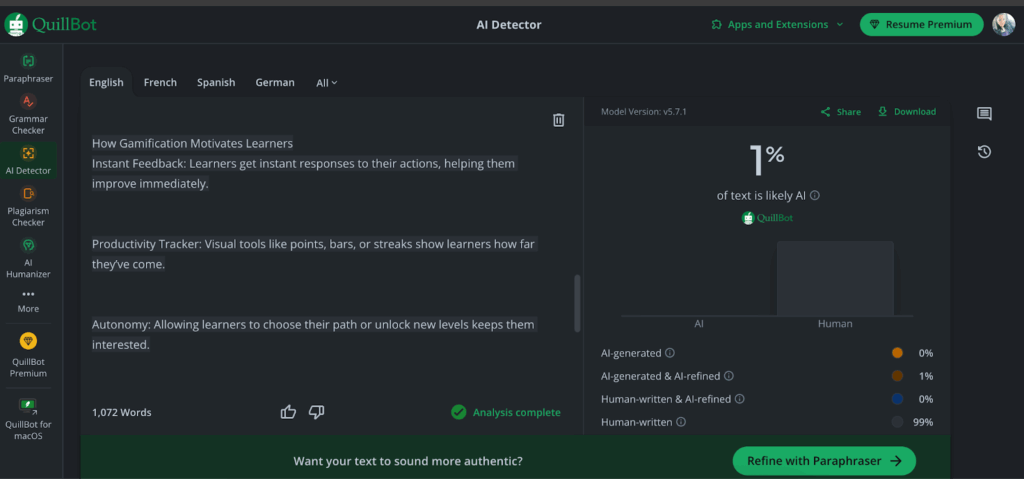Gamification has transformed eLearning by integrating elements of game design into educational settings. This innovative approach enhances engagement, motivation, and learner retention by making the experience enjoyable and interactive. It encourages users to participate, provides a sense of achievement, and promotes a healthy competition, turning traditional methods into a more dynamic, results-oriented experience.
By aligning game mechanics with educational objectives, gamification ensures learning remains engaging and impactful. As eLearning continues to advance, the use of gamification will help businesses and educators create personalized and learner-centered experiences that inspire growth and development. Before we discuss the benefits of gamification in eLearning, let’s understand its basics.
Understanding Gamification
Gamification in eLearning refers to the integration of game mechanics, such as leaderboards, points, badges, and progress tracking, into non-game environments (like learning or business) to enhance learner engagement and participation. It taps into the fundamental human drive for competition and achievement. By integrating these mechanics, learning experiences become more rewarding and engaging, transforming traditional training into interactive activities that motivate learners to excel.
Transforming Engagement With Gamification
Traditional and often outdated learning methods struggle to keep the new generation of learners engaged. In fact, many learners express discontentment with conventional learning. Gamification has changed the game by introducing elements such as rewards, leaderboards, and badges, making classes and sessions more engaging and enjoyable. This approach not only boosts learner motivation but also instills a sense of friendly competition, making knowledge retention feel like a reward instead of a challenge.
Evidence-Based Gamification Strategies For Transforming Learning
Across many industries, businesses and educators are proactively adopting creative training modules to boost motivation and enhance productivity. Research has shown that companies implementing gamification often observe a productivity increase of up to 30%. By tapping into natural human drives, gamification in eLearning creates a positive organizational culture, which promotes skill development and effective learning. This approach also boosts individual morale for teamwork through seamless learning experiences.
The Benefits Of Gamification
Gamification’s impact goes far beyond simple fun, as it creates real value across the entire organization. This learning strategy delivers measurable improvements for the individual learner, provides valuable data for Learning and Development (L&D) teams, and contributes to the overarching goals of the business. Here’s a closer look at these benefits:

For Learners
- Boosts engagement and motivation: Game-like rewards and progress tracking tend to encourage learners to remain connected throughout their learning assessments. Such a level of motivation can also lead to profound focus and heightened enthusiasm for achieving learning goals.
- Promotes active participation: By incorporating gamification elements, trainers transform passive lessons into engaging experiences that encourage active participation.
- Strengthens critical thinking and problem-solving skills: Situational challenges and play simulations often prompt learners to think logically and act strategically to pass barriers. This also helps develop practical knowledge.
- Enables safe, risk-free experimentation: The gamification approach provides low stakes for trying out ideas and techniques without the risk of failure. This way, students can positively hone their skills.
- Adapts to various learning styles: This approach incorporates auditory and visual elements that appeal to various learning styles. This enables students to progress in the most effective manner possible.
For L&D Teams
- Offers quantifiable engagement and performance: Gamification in eLearning has pre-equipped analytics that provide educators with real-time feedback on learners’ progress. This insight helps them determine what works and further make adjustments to their training strategies.
- Supports interactive feedback: Real-time feedback reveals how learners are engaging with the content.
- Encourages collaboration and peer learning: This streamlined system helps learners share their knowledge and collaborate with their peers.
- Saves training costs and streamlines onboarding: Gamification also helps reduce the workload of repeated training and trim unnecessary costs.
For Businesses
- Builds a skilled, competitive workforce: Employees trained under this very system will retain knowledge and apply it efficiently.
- Enhances employee satisfaction: Relevant and challenging learning opportunities lead to job satisfaction. This implies that motivated employees are more likely to stay in the organization for an extended period.
- Increases overall productivity: Gamified modules help drive performance metrics, connecting training successes with business goals.
- Promotes adaptability to change: Interactive tasks and on-the-job scenarios enable employees to be more dynamic and versatile in taking up new opportunities.
- Inspires creativity and innovation: Gamification in eLearning promotes unconventional thinking through investigation and risk-taking. This inventive way of thinking is transferred into the creative solutions at work.
Top Ways Gamification Improves Corporate Training
Gamification ties learning to real performance goals. Unlike traditional methods, employees are asked to actively participate in simulations that mirror real-world tasks. Here are some ways it enhances corporate training:
- Aligns Learning With Performance Objectives: Gamified goals can reflect company metrics like productivity, enhanced sales, client retention, and user satisfaction, helping employees understand how their training impacts the company’s bottom line.
- Increases course completion rates: Users learn to take ownership of their progress and are more likely to complete each training.
- Leads to better knowledge retention: Since feedback is provided instantly and repetition makes lessons stick, it leads to better retention of acquired knowledge.
- Encourages practical application: Users learn to apply what they learn in simulated, low-risk environments to real situations.
How Gamification Motivates Learners
While gamification has clear benefits for organizations, its strength lies in appealing to the individual’s psychology. It paves the way for:
- Instant feedback: Learners receive instant feedback on their actions, helping them understand how they’re performing. This immediate loop reinforces correct behavior and prevents learners from repeating the same mistakes.
- Real-time productivity tracking: Visual tools, such as points, bars, or streaks, show learners how far they’ve come. Seeing measurable progress against a goal provides a powerful sense of purpose and encourages continued effort.
- Autonomy: Allowing learners to choose their own path and unlock new levels keeps them interested. Giving them control over their learning journey deepens their commitment to maintaining a steady learning pace.
- Fair competition: Leaderboards and peer challenges make learning a social and engaging experience. This social structure motivates users to strive for excellence not just for personal reward, but also for standing among their peers.
Final Thoughts
The use of gamification in eLearning has proven to be a potent strategy for enhancing overall employee engagement. By incorporating game-like elements such as points, badges, and leaderboards, businesses and educators can create an interactive learning environment that is highly motivating for their users. This approach not only promotes engagement but also encourages employees to take their professional development seriously. The benefits associated with gamification, including increased enjoyment and a sense of mastery, contribute to a more engaging workforce.




